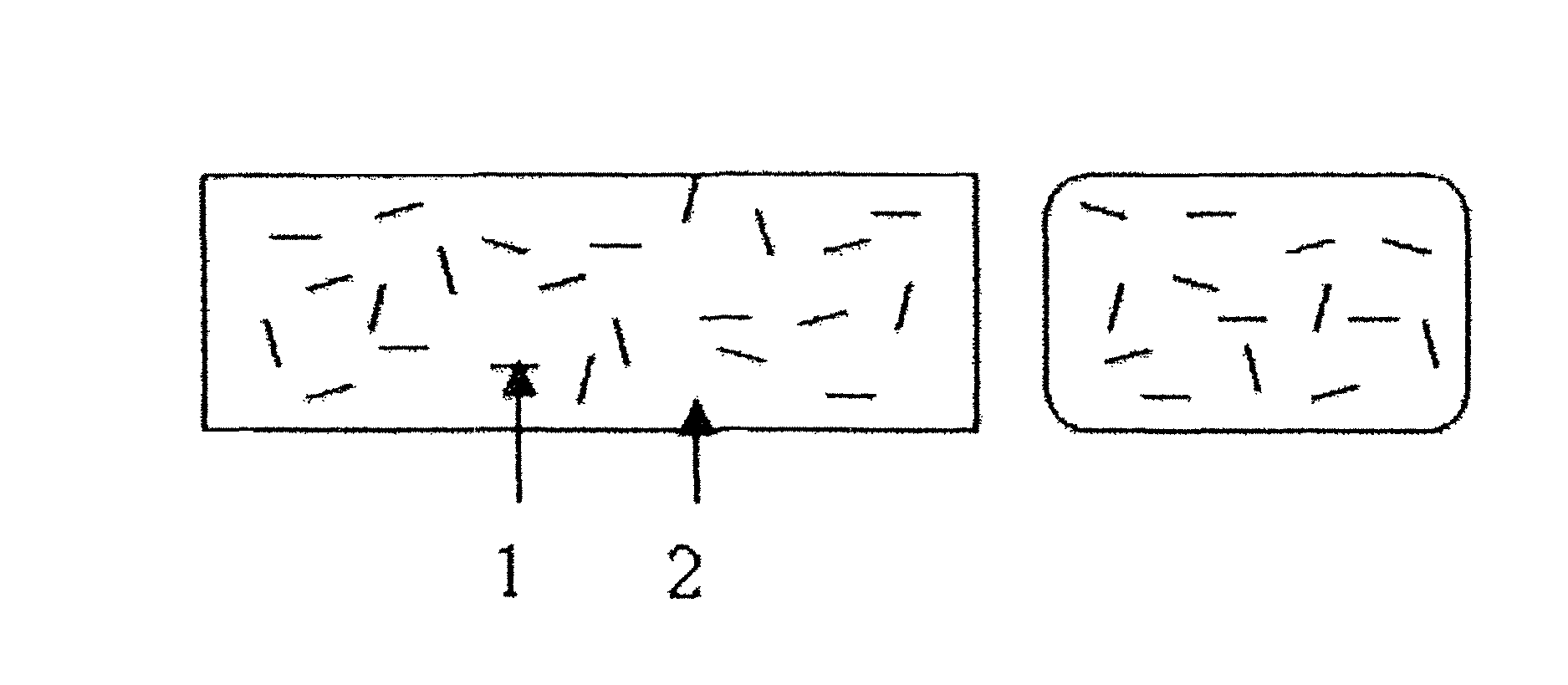Fiber reinforced propylene resin composition
a technology resin, which is applied in the field of fiber reinforced propylene resin composition, can solve the problems of deterioration of molded articles, reduced mold processability, strength degradation, etc., and achieve excellent mechanical properties, good interfacial adhesion, and excellent light weight.
- Summary
- Abstract
- Description
- Claims
- Application Information
AI Technical Summary
Benefits of technology
Problems solved by technology
Method used
Image
Examples
reference example 1
Carbon Fiber 1
[0150]From a copolymer containing polyacrylonitrile as a main component, a continuous carbon fiber having a total filament number of 24,000 was prepared through spinning, burning treatment and surface oxidation treatment. This continuous carbon fiber had the properties as described below.[0151]Filament diameter: 7 μm[0152]Mass per unit length: 1.6 g / m[0153]Specific gravity: 1.8[0154]Surface oxygen concentration ratio [O / C]: 0.06[0155]Tensile strength: 4600 MPa[0156]Tensile modulus of elasticity: 220 GPa
[0157]The surface oxygen concentration ratio was determined using a carbon fiber prepared after the surface oxidation treatment, by an X ray photoelectron spectroscopy for chemical analysis in the following procedure. At first, a carbon fiber bundle was cut into a length of 20 mm and put and spread on a copper specimen supporting plate. The inside of a specimen chamber was kept at 1×108 Torr using A1Kα1, 2 as an X ray source. As a correction value of a peak accompanied w...
reference example 2
Carbon Fiber 2
[0158]From a copolymer containing polyacrylonitrile as a main component, a continuous carbon fiber having a total filament number of 24,000 was prepared through spinning, burning treatment and surface oxidation treatment. This continuous carbon fiber had the properties as described below.[0159]Filament diameter: 7 μm[0160]Mass per unit length: 1.6 g / m[0161]Specific gravity: 1.8[0162]Surface oxygen concentration ratio [O / C]: 0.12[0163]Tensile strength: 4600 MPa[0164]Tensile modulus of elasticity: 220 GPa
reference example 3
Preparation of Propylene Resin Mixture PP(1)
[0165]91 Parts by weight of a propylene / butene / ethylene copolymer
[0166](B-1) (having a constituting unit derived from propylene (hereinafter sometimes referred to “C3”) of 66% by mole and Mw of 90,000) as the first propylene resin (B), 9 parts by weight of a maleic anhydride modified propylene / ethylene copolymer (having C3 of 98% by mole, Mw of 25,000 and an acid content of 0.81 mm mol equivalent weight) as a raw material of the second propylene resin (C-1) and 3 parts by weight of potassium oleate as the surfactant were mixed. This mixture was fed at a rate of 3,000 g / hr from a hopper of a twin screw extruder (PCM-30, L / D of 40, manufactured by Ikegai Tekko Inc., and further a 20% potassium hydroxide aqueous solution was continuously fed at a rate of 90 g / hr from a port provided on a vent part of the extruder, and they were extruded continuously at a heating temperature of 210° C. The resin mixture extruded was cooled to 110° C. by a stat...
PUM
| Property | Measurement | Unit |
|---|---|---|
| equivalent weight | aaaaa | aaaaa |
| equivalent weight | aaaaa | aaaaa |
| length | aaaaa | aaaaa |
Abstract
Description
Claims
Application Information
 Login to View More
Login to View More - R&D
- Intellectual Property
- Life Sciences
- Materials
- Tech Scout
- Unparalleled Data Quality
- Higher Quality Content
- 60% Fewer Hallucinations
Browse by: Latest US Patents, China's latest patents, Technical Efficacy Thesaurus, Application Domain, Technology Topic, Popular Technical Reports.
© 2025 PatSnap. All rights reserved.Legal|Privacy policy|Modern Slavery Act Transparency Statement|Sitemap|About US| Contact US: help@patsnap.com

